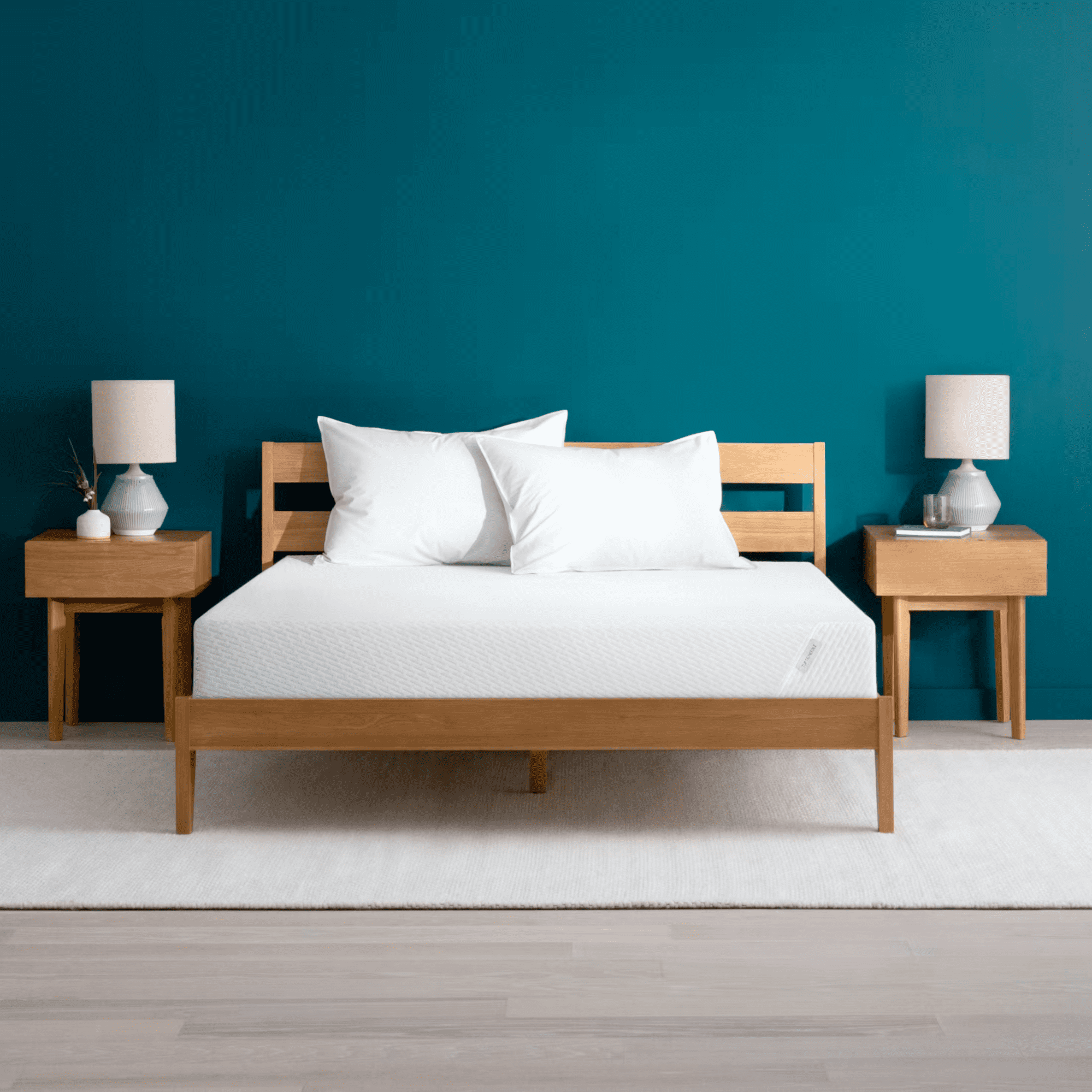Bed bugs affect people all over the world. They live in many climates, from the tropics to cooler regions, and in diverse environments, from five-star hotels to refugee camps. And, contrary to popular belief, bed bugs can thrive in clean and dirty environments alike.
These bothersome insects present a growing problem for people in North America. We cover the early signs of a bed bug infestation, how to get rid of bed bugs quickly and effectively, and how to reduce the chances of getting bed bugs in the first place.
Early Signs of Bed Bugs
Bed bugs often leave physical evidence on your skin or in your house. You may wake up with bed bug bites, which often are red or itchy spots on the skin. Or you might notice bed bug eggs or feces while you are cleaning or doing laundry.
In just two months, a handful of bed bugs can become several thousand. This means it’s important to identify and eradicate a bed bug infestation as early as possible. However, this can be difficult because bed bugs are hard to distinguish from other insects, and their bites may resemble other types of bites.
What Do Bed Bug Bites Look Like?
Bed bug bites can be swollen, red, and itchy. The bites frequently, though not always, appear in a line. They occur most often on the face, arms, and hands.
Some people experience bites as red or purplish marks without irritation, while people with a bed bug allergy may have severe skin reactions. Others do not react to the bites at all. It can take anywhere from one day to two weeks for marks to appear after being bitten.
Bed bug bites can be difficult to tell apart from other wounds and skin conditions, such as:
- Mosquito or flea bites
- Hives
- Fungal skin infections
- Eczema
Just having bites is not usually enough to be sure that you have a bed bug problem. To confirm an infestation, you need to find additional evidence.
How to Check for Bed Bugs
Checking for bed bugs involves looking closely in the areas where bed bugs are most likely to hide. Bed bugs are most commonly found in and around sleep areas where they feed at night. Frequent daytime hiding places include:
- Mattress seams and piping
- Bed foundations and box springs
- Headboards
Bed bugs may also be found in other locations, especially when an infestation is more severe. Examples of other potential bed bug hiding places include:
- Behind wallpaper
- Inside bedside furniture or nearby items
- Around door frames or within cracks in the wall
- Between curtains or cushions
- Around electrical sockets
To check for bed bugs, you may need a flashlight and magnifying glass. Keep an eye out for living bed bugs, but also look for other signs, such as:
- Bed bug feces, which look like dark spots made by a marker tip
- Dark red blood stains from crushed bed bugs
- Very small and white bed bug eggs
- Light yellow pieces of shed skin
Also, take note if your bedroom has a musty or sweet smell, which can arise from a severe infestation.
What Do Bed Bugs Look Like?
Bed bugs are brown insects with oval-shaped bodies. Their bodies are flat but become elongated, swollen, and reddish-brown when they feed. Young bed bugs can be quite small, and adult bed bugs are roughly as big as an apple seed.
Many other insects appear similar to bed bugs. In general, you shouldn’t treat an infestation if you aren’t sure you have bed bugs. When in doubt, contact a professional who can confirm that an infestation exists.
Contain the Bed Bug Infestation
Getting rid of bed bugs is usually difficult and time-consuming. If you notice signs of an infestation, call a trained professional instead of trying to do it yourself. However, you can take steps to contain the problem before your home is treated.
- Bug-proof the room: Prevent bed bugs from hiding in the walls and floor by sealing any cracks around your sleeping area.
- Contain the bed bugs: Put your mattress and box spring inside zippered encasements. This keeps the bugs from finding a new hiding place, and the trapped bed bugs will die inside the encasements. Place potentially infested items in sealed plastic containers where they can be kept for many months, so that the bugs die inside.
- When in doubt, throw it out: Toss mattresses, furniture, and other items that can’t be treated. To prevent bed bugs from spreading to others, contact sanitation services to collect the infested items.
Prepare for Bed Bug Treatment
You can take several steps to prepare your home and get through the treatment process more quickly. For example, getting rid of clutter is a good way to remove bed bugs’ hiding places.
Remove any cardboard, books and papers, and clothing on the floor. You can store any items you need to keep in plastic boxes or tightly sealed bags.
Get your bed ready for treatment by killing any visible bugs and removing any eggs from the mattress and foundation. Ensure that there is nothing under the bed and that no part of your bed or bedding touches the floor or walls.
Bed bug interceptors can help you track the infestation. Interceptors are traps that go under the legs of the bed and keep bed bugs from reaching your sleeping surface. You can buy interceptors online or at hardware stores.
Kill the Bed Bugs
Getting rid of bed bugs can be challenging because they can hide out in many difficult-to-find spaces. While do-it-yourself methods may reduce the number of the insects, it’s usually best to get help from a professional who can get rid of bed bugs systematically.
How to Get Rid of Bed Bugs Fast
The fastest way to get rid of bed bugs is to immediately start working with a professional pest control specialist. Together, you can execute a plan to rapidly prepare your home and then carry out treatment to kill bed bugs.
If hiring a professional exterminator is not an option, you may try DIY methods. But keep in mind that these strategies may not completely eliminate an infestation.
- Cold-based treatment: It’s possible to treat infested items by placing them in a freezer at 0 degrees Fahrenheit for three days. However, home freezers may not get cold enough to reliably kill bed bugs, and this approach will not kill bed bugs hidden in walls or furniture.
- Heat-based treatment: Bed bugs and their eggs die when exposed to temperatures above 122 degrees Fahrenheit. Putting infested items in a hot dryer can kill bed bugs, but heating the places where bed bugs hide can be challenging.
- Steam cleaning: Use a steam cleaner to kill bed bugs hiding in narrow crevices or on textiles. To kill bed bugs, the steam should reach 130 degrees and be applied to any sites that could be harboring bed bugs.
- Pesticides: A range of pesticides can kill bed bugs, but sometimes bed bugs become resistant to them. Applying pesticides can make bed bugs relocate to new hiding spaces, and some chemicals pose risks to human health.
How to Get Rid of Bed Bugs Permanently
Because bed bugs are hard to eradicate, exterminators often use combinations of treatments to permanently get rid of an infestation. For example, they may combine heat treatments with one or more pesticides. They may need to use several approaches to kill bed bugs at all phases of their life cycle.
Professional heat treatments are more effective than DIY methods because they can treat large areas. Exterminators can use specialized equipment to raise the temperature of your home or bedroom to 122 degrees Fahrenheit. Lower temperatures may not kill all of the bed bugs in an infested space.
Ensuring that bed bugs are gone for good will require regular monitoring to know that the treatments were effective. A professional can set a timeline for reevaluating your home, so you can be confident that you have permanently gotten rid of bed bugs.
How to Keep Bed Bugs Away
Vigilantly watching for signs of bed bugs is the best way to avoid an infestation. When you travel or buy used items, take measures to prevent introducing bed bugs into your house.
- Check your hotel mattress: If you’re staying in a hotel or another temporary space, inspect the mattress and box spring for signs of bed bugs, paying close attention to the seams and crevices.
- Keep your luggage safe: Avoid placing your luggage or clothing on the bed when you stay in a hotel. Keep your worn items in a sealed bag. Inspect the luggage rack, and then put your suitcase on the rack instead of the bed.
- Be cautious when buying second hand: When you shop at thrift stores, check items for bed bugs before bringing them home. This is especially true of beds, bedding, and furniture.
Other steps to reduce the chances of an infestation include:
- Sealing wall cracks if you live in an apartment building to keep bed bugs from entering via another unit
- Zip your mattress inside a sealed cover
- Decrease clutter and vacuum regularly
Even diligently following these steps doesn’t guarantee that bed bugs won’t get in. It’s important to be on guard for signs of bed bugs and act quickly if you detect them in your home.
References
Ask the Sleep Doctor
Have questions about sleep? Submit them here! We use your questions to help us decide topics for future articles, videos, and newsletters. We try to answer as many questions as possible. You can also send us an email. Please note, we cannot provide specific medical advice, and always recommend you contact your doctor for any medical matters.







